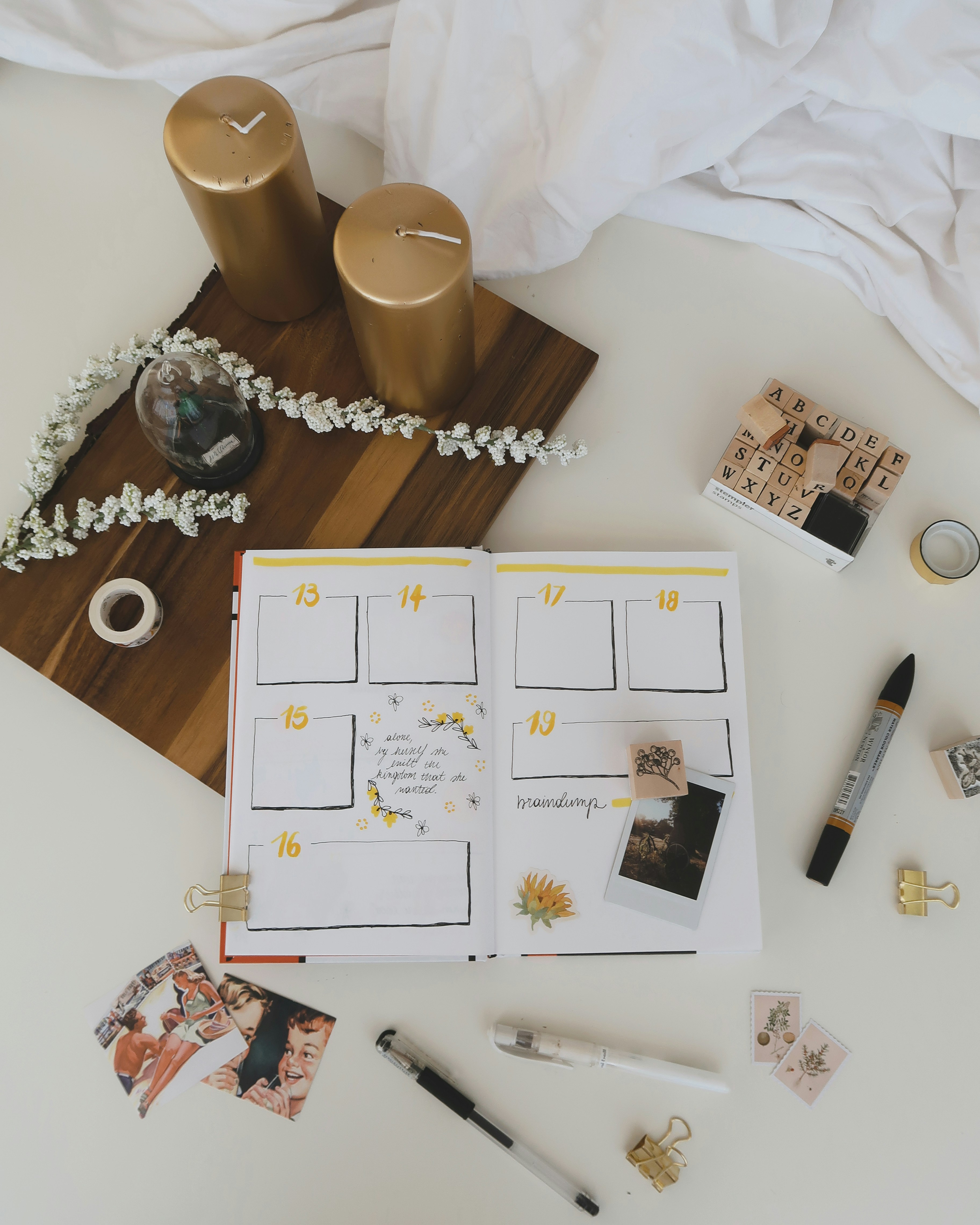A bullet journal, or BuJo, is a method of personal organization coined by designer Ryder Carroll. It's important to note that a bullet journal is less of a traditional journal or diary and more of a planner.
It is an artistic and creative way to sort out the chaos of your everyday life and transform it into a streamlined system.
Why start a bullet journal?
Photo by Estée Janssens on Unsplash
The best thing about a bullet journal is that it is entirely do-it-yourself (DIY). Every page of a bullet journal is designed by you, which means that you can completely customize it to your liking and preferences.
It also allows you to truly let your creativity flow! A simple Google search will turn up pages of bullet journal designing videos that showcase just how creative you can be with a bullet journal.
How to start a bullet journal
1. Think about what you want from your bullet journal
Before you begin, you need to think about what you want your bullet journal to do for you. You should think about what features you would like in your bullet journal, and what would fit your style best.
You should also think about the design of your bullet journal. Some people enjoy more minimalistic style, others may come up with monthly themes and spreads. It will be helpful for you to consider and plan this out beforehand.
2. Gather your supplies
To create a bullet journal, you'll need a dot or grid journal. Other art supplies needed depends on how creative you want to be, and may include:
- Markers
- Washi tape
- Colored or patterned paper
- Highlighters
- Stickers, and more!
3. Set up your Index
The Index is basically a list of names of pages in your bullet journal and their page numbers. Whenever you create a new page in your bullet journal, you simply go back to your index page and add it to the list.
To create your index pages, simply label the first 2 pages of your journal "index". Then, go through your bullet journal and number the pages (if they aren't pre-numbered already), or simply number them as you go along.
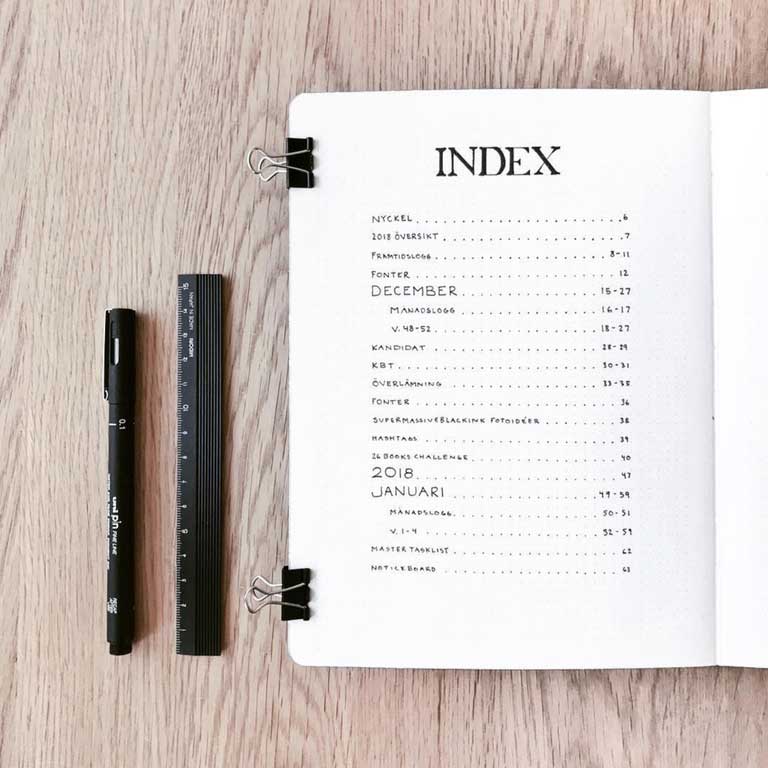 Example of an index page from Petite Melanie
Example of an index page from Petite Melanie
4. Future logs
A future log is a year-at-a-glance calendar, where you can look at important and fun events for every month, such as birthdays, holidays, meetings and more. It should be at the front of your bullet journal.
The number of pages you should save for your future log depends on your design for it. For a simple future log, however, 2 pages are usually sufficient.
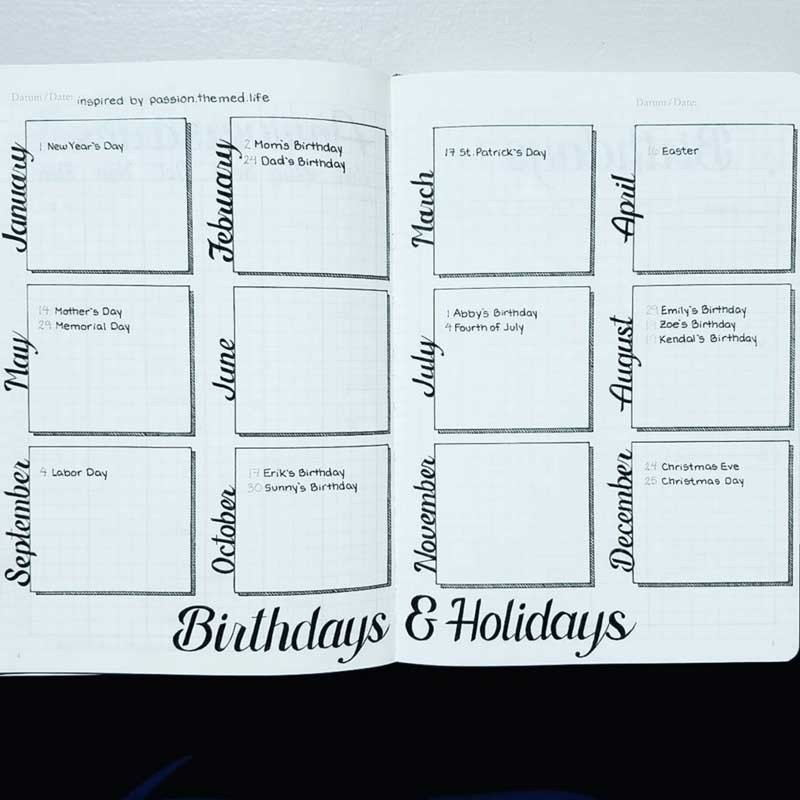 Example of a bullet journal future log from @craftyenginerd
Example of a bullet journal future log from @craftyenginerd
5. Monthly logs
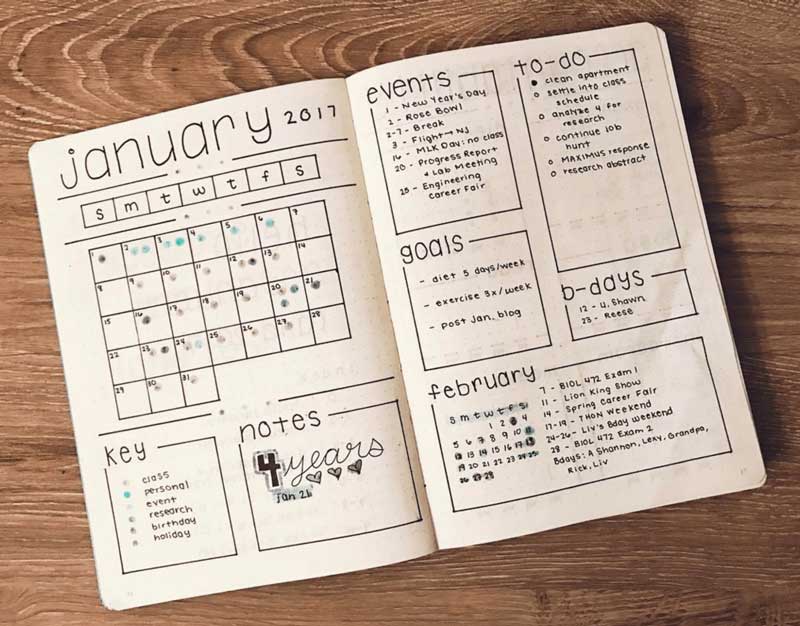 Example of a bullet journal monthly log from @nittany_bujo
Example of a bullet journal monthly log from @nittany_bujo
Just like in a traditional, pre-made planner, you should also add monthly logs in your bullet journal. This consists of a monthly calendar spread and task page for each month of the year.
Monthly calendar spread
A simple way to create your monthly calendar spread is to create a grid with 30 or 31 boxes for each day of the month. Remember to leave enough space in each box for you to write in an important task or appointment for that day.
Monthly task page
Your task page should be a space for you to write your monthly to-do list, meetings and events. This helps you to determine priorities for the month, what remains undone from the last month, and what improvements you want to make now.
6. Daily Log
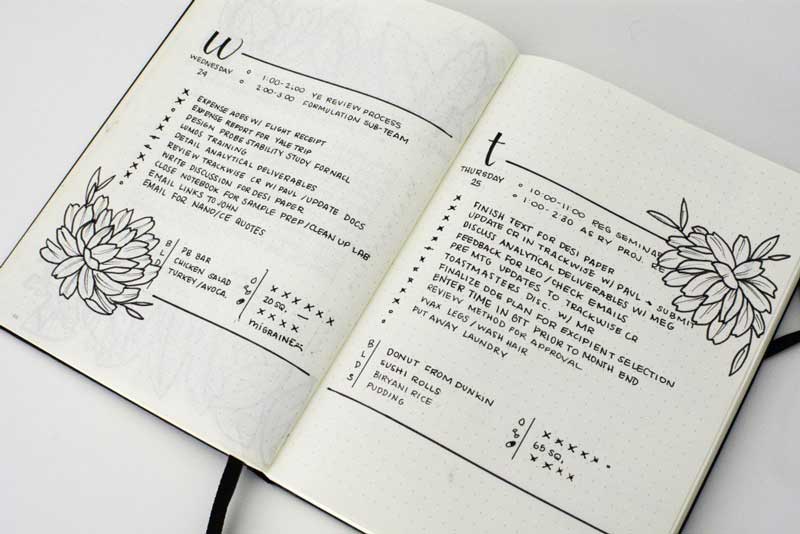 Example of a bullet journal daily log from @bonjournal_
Example of a bullet journal daily log from @bonjournal_
For day-to-day use, remember to include a daily log in your bullet journal. At the simplest level, your daily log can consist of just a to-do list, priorities and important events to take note of.
If you wish to get more detailed, you may even want to design an hourly schedule. This allows you to plan how long you should take for tasks and appointments.
According to BuJo creator Ryder Carroll, daily logs should not be set up ahead of time. Instead, it's best to fill them in as you go or on the night before.
7. Custom Collections
Your bullet journal is whatever you want it to be, and there are many custom collections that you can include to make your bullet journaling experience as fitted to you as possible.
Here are some custom collections or features that you can include in your bullet journal:
- Gratitude log
- Financial planner
- Habit tracker
- Fitness and health log
- Food and water tracker
- Mood tracker
8. Use signifiers
According to Carroll, signifiers are "symbols that give your entries additional context at a glance". You add these symbols to the left of your bullets so that they stand out and are easily noticeable.
For example, you can use * (asterisk) to mark the most important things on your list, and ! (exclamation mark) to indicate an important idea or inspiration that you want to keep in mind.
Bullet journals are great for those who want to express their creativity while also creating a completely personalized and customized planner. However, as you can see, bullet journals require lots of time and effort to set up, which not a lot of people have patience for.
If you simply cannot afford the time and effort to create a bullet journal planner of your own, consider getting premade planners — both digital and traditional — that are equally as beautiful and functional as a bullet journal.
